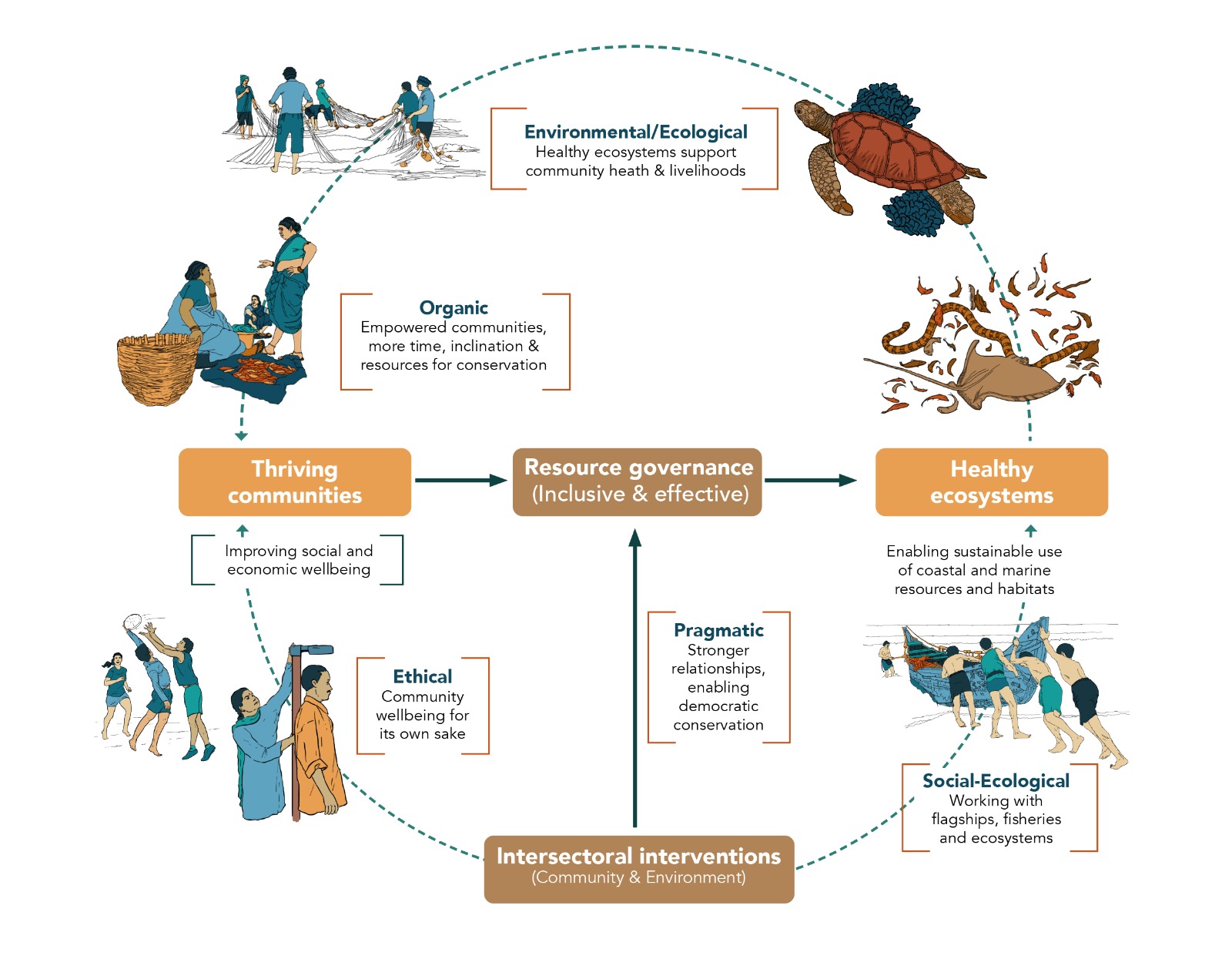What makes systems change across coastal-marine landscapes so urgent and yet hard to achieve?
For one, coastal and marine areas are starkly different from terrestrial realms in myriad ways. This truism hit home hard for Dakshin, having worked for several years across diverse land-seascapes across the Indian Ocean. A major reason for the failure to achieve lasting change is that few change agents (including donors, NGOs and governments) acknowledge the interlinked and multisectoral challenges that are embedded within these landscapes of complex, uncertain systems. Experts typically term these as ‘messy’, ‘wicked’ or ‘ill-defined’ problems.
This is why Dakshin believes that we need a SeaChange for ‘systems change’!
A significant related challenge for intervention in coastal domains is the lack of inclusive conservation and development, both in policy and practice. Holistic intersectoral interventions however, are critical for the health and sustainability of India’s coastal spaces and communities. This was Dakshin’s point of departure for SeaChange.
The SeaChange model involves collaborating with small-scale fisher (SSF) and local communities across India, with relevant government bodies, experts and relevant industry actors. These collaborations lead to customised interventions that meet the key SeaChange criteria. SeaChange involves diverse stakeholders within local communities across landscapes, resulting in inclusive solutions that are implemented through collective action and partnerships at varied scales. The flexible and grounded nature of this model puts philanthropic resources to better use and makes NGOs better-placed to support communities through shocks resulting from complex challenges, while building resilience to overcome such shocks through long-term embedded engagement.
SeaChange is Dakshin’s intersectoral approach to intervention for system-level change. It aims to address complex socio-ecological crises faced by small-scale fisher (SSF) and local communities such as fish-catch declines, climate change, biocultural diversity loss and conservation conflict. SeaChange aims to bring about systemic change through interlinking interventions in the domains of conservation, fisheries, governance, health, and livelihoods. SeaChange is based on a) systems-thinking, b) prioritises landscapes as units of intervention, c) is based on intuitive learning, and d) is scalable but culturally nuanced.
The key spatial unit of intervention for SeaChange is the landscape. A landscape can be defined as a continuous or discontinuous area that has comparable biophysical or social characteristics, or both, and typically exhibit a suite of attendant challenges that are also interlinked. Its boundaries, though subjective (and perhaps invisible to outsiders), are often intuitively evident and identifiable to those who are embedded in the system. In contrast to larger political units such as states or smaller spatial units such as villages or hamlets, landscapes serve as ideal units for holistic, systemic interventions that bring together multiple stakeholders unified by common challenges in sustainability and development. Our SeaChange interventions currently cover landscapes in Odisha, Andaman and Nicobar Islands and Tamil Nadu.





